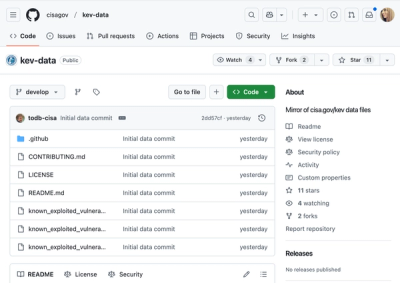
Security News
PyPI’s New Archival Feature Closes a Major Security Gap
PyPI now allows maintainers to archive projects, improving security and helping users make informed decisions about their dependencies.
paypal-recurring-se
Advanced tools
Makes creating recurring payments with node.js easier. This version fixes issues with profile start dates and removes the coffee script, replacing it with plain JavaScript.
This package makes integration of PayPal's recurring payments easier in your next project using node.js.
This version fixes problems with profile start dates and removes the coffee script, replacing it with
plain JavaScript.
npm install --save paypal-recurring-se
Integrating PayPal's recurring payments into your application to get paid can be confusing, but it only takes two steps to convert a user into a paying recurring customer of yours.
Enter your own API credentials (obtained here)
in the demo application (./examples/express) and run it by entering this
in your terminal:
make demo
If you want to read up on PayPal's API documentation for recurring billing, visit this page.
###Introduction & converting users into customers Your user visits your node.js-driven website where you already have setup your environment by installing this package and passed your API credentials to the constructor of the class.
By calling the authenticate() method, you'll get an unique URL from PayPal that you redirect your user to.
Now at PayPal's website, your user either logs in to an existing account or creates a new one and then gets to accept your recurring payment agreement.
PayPal then sends the user back to your website along with a unique token + customer id appended to the url as query strings. With this token and the payerid, you run the createSubscription-method and your user is now turned into a paying subscriber of yours.
You can then use the PROFILEID that createSubscription returns on success
to either fetch subscription information and remotely pause/cancel subscriptions from within your app in the future by using the .getSubscription() & .modifySubscription() -methods.
The constructor takes two arguments: credentials & enviroment.
Username, password and signature for the credentials are all your PayPal API credentials
The default environment uses the PayPal Sandbox API to allow testing. When going live, pass "production" as a second parameter to the constructor. This will create real subscriptions, so use with care.
// Require the module and setup our instance of the class
var Paypal = require('paypal-recurring'),
paypal = new Paypal({
username: "info@example.com",
password: "****",
signature: "****",
}
//, "production" // USE WITH CARE!
);
(first step in the payment flow)
This method generates a unique url to authenticate the user through PayPal by calling the SetExpressCheckout action in the PayPal API.
You should redirect your user to the url that this method returns to allow the user to either login to an existing account or create a new one with PayPal.
This method takes two arguments - options (object) and callback (fn).
The options object must contain at least RETURNURL, CANCELURL, PAYMENTREQUEST_0_AMT & L_BILLINGAGREEMENTDESCRIPTION0 for this API operation to be valid.
Your callback will be passed three arguments upon API response; error, data
& url.
Example usage of .authenticate():
// Authenticate a future subscription of ~10 USD
paypal.authenticate({
RETURNURL: "https://localhost/purchase/success",
CANCELURL: "https://localhost/purchase/fail",
PAYMENTREQUEST_0_AMT: 10,
L_BILLINGAGREEMENTDESCRIPTION0: "A description of this subscription"
}, function(err, data, url) {
// Redirect the user if everything went well with
// a HTTP 302 according to PayPal's guidelines
if (!err) { res.redirect(302, url); }
});
This is what the actual API request will look like when calling authenticate as above:
USER: "***",
PWD: "***",
SIGNATURE: "***",
VERSION: 94,
METHOD: "SetExpressCheckout",
ADDROVERRIDE: 0,
ALLOWNOTE: 0,
BUYEREMAILOPTINENABLE: 1,
NOSHIPPING: 1,
SURVEYENABLE: 0,
RETURNURL: "https://localhost/purchase/success",
CANCELURL: "https://localhost/purchase/fail",
PAYMENTREQUEST_0_AMT: 10,
L_BILLINGAGREEMENTDESCRIPTION0: "A description of this subscription",
L_BILLINGTYPE0: "RecurringPayments"
Note: Some of the parameters above are not explicitly specified in the
arguments and are set as default inside the SetExpressCheckout method to suit
most online subscription businesses. Override any of the defaults by including
that key/value in the options hash.
Please visit this page for official PayPal API
documentation of the SetExpressCheckout action to learn how you can customize the API call to suit your business.
(final step in the payment flow)
After calling .authenticate() the user is now back on your server at the RETURNURL you specified with both token and payerid appended to the URL as querystrings.
You now call the .createSubscription()-method, passing both the token and the payerid to setup the actual recurring billing profile between you and the customer, which runs the CreateRecurringPaymentsProfile on the PayPal API.
This method takes four arguments: token (string), payerid (string), options (object) & callback (fn)
The options object must contain at least AMT, DESC, BILLINGPERIOD & BILLINGFREQUENCY for this API operation to be valid.
The start date of the payment profile is automatically set and converted into ISO/UTC format & timezone before being sent to the PayPal API. If you like to change the first billing date of your customer, just pass along a date object in the options object like PROFILESTARTDATE: new Date() and you should be fine.
Your callback function will be passed two arguments upon API response; error & data.
Example usage of .createSubscription():
// Create a subscription of 10 USD every month
paypal.createSubscription('token','payerid',{
AMT: 10,
DESC: "A description of this subscription",
BILLINGPERIOD: "Month",
BILLINGFREQUENCY: 1,
}, function(err, data) {
if (!err) {
res.send("You are now one of our customers!");
console.log("New customer with PROFILEID: " + data.PROFILEID)
}
});
**This is what the actual API request will look when calling .createSubscription() as above: **
USER: "***",
PWD: "***",
SIGNATURE: "***",
VERSION: 94,
METHOD: "CreateRecurringPaymentsProfile",
TOKEN: "***",
PAYERID: "***",
INITAMT: 0,
PROFILESTARTDATE: "2013-02-11T18:25:25.000Z",
AMT: 10,
DESC: "A description of this purchase",
BILLINGPERIOD: "Month",
BILLINGFREQUENCY: 1
Please visit this page
for official PayPal API documentation of the CreateRecurringPaymentsProfile action to learn how you can customize the API call to suit your business.
To fetch information about a payment profile of one of your customers, call the .getSubscription method with the PROFILEID that was returned when you invoked .createSubscription.
This method takes two arguments: profileid (string) & callback (fn).
Your callback function will be passed two arguments upon API response; error & data.
paypal.getSubscription('subscriptionid', function(err, data) {
if (!err) { console.log(data)}
});
Please visit this page
for official PayPal API documentation of the GetRecurringPaymentsProfileDetails action.
To remotely modify subscriptions - cancel, suspend and reactivate subscriptions you can use the .modifySubscription-method.
It takes four arguments: profileid (string), action (string), note (string) & callback (fn).
Action may be either cancel, suspend or reactivate.
The note argument is optional and can be left out if you doesn't need to send an note along with the payment profile status change to your customer.
Your callback function will be passed two arguments upon API response; error & data.
paypal.modifySubscription('subscriptionid', 'Cancel' , function(err, data) {
if (!err) { res.send "Your subscription was cancelled" }
});
Please visit this page
for official PayPal API documentation of the ManageRecurringPaymentsProfileStatus action.
###Different subtotals/descriptions
If your description and/or subtotal differs between what you enter when calling authenticate & createSubscription, PayPal may deny your API call.
###Trial periods
If you want to provide a proper free trial period before any billing is done, avoid using any of the billing fields (TRIALBILLINGPERIOD etc) when calling the createSubscription method.
Instead, make sure to set the PROFILESTARTDATE ahead in time according to when you want the first billing to occur:
var d = new Date()
d.setMonth(d.getMonth()+1)
MIT license. See the LICENSE file for details.
FAQs
Makes creating recurring payments with node.js easier. This version fixes issues with profile start dates and removes the coffee script, replacing it with plain JavaScript.
The npm package paypal-recurring-se receives a total of 28 weekly downloads. As such, paypal-recurring-se popularity was classified as not popular.
We found that paypal-recurring-se demonstrated a healthy version release cadence and project activity because the last version was released less than a year ago. It has 0 open source maintainers collaborating on the project.
Did you know?

Socket for GitHub automatically highlights issues in each pull request and monitors the health of all your open source dependencies. Discover the contents of your packages and block harmful activity before you install or update your dependencies.

Security News
PyPI now allows maintainers to archive projects, improving security and helping users make informed decisions about their dependencies.

Research
Security News
Malicious npm package postcss-optimizer delivers BeaverTail malware, targeting developer systems; similarities to past campaigns suggest a North Korean connection.

Security News
CISA's KEV data is now on GitHub, offering easier access, API integration, commit history tracking, and automated updates for security teams and researchers.